The 2025 Stanley Cup playoffs are complete, and the Panthers have repeated as champions. Now, it's time to look ahead to the offseason.
This is the place where we look ahead to the offseason for all the teams eliminated from contention: Who will those teams try to add via free agency, trades and the draft? How much better will the team be in 2025-26?
Read on for a look at what went wrong for each eliminated team, along with a breakdown of the biggest keys this offseason and realistic expectations for next season. Note that more teams will be added to this story as they are eliminated.
Note: Profiles for the Atlantic and Metro teams were written by Kristen Shilton, and Ryan S. Clark analyzed the Central and Pacific teams. Stats are collected from sites such as Natural Stat Trick, Hockey Reference and Evolving Hockey. Projected cap space per PuckPedia. Dates listed with each team are when the entry was published. Teams are listed alphabetically by publication date.
Jump to a team:
ANA | BOS | BUF | CGY
CAR | CHI | COL | CBJ
DAL | DET | EDM| FLA | LA
MIN | MTL | NJ | NSH | NYI
NYR | OTT | PHI | PIT
SJ | SEA | STL | TB
TOR | UTA | VAN | VGK
WSH | WPG

Playoff teams
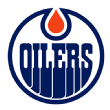
June 17: Edmonton Oilers
Projected cap space: $11.96 million
2025 draft picks: 3rd (STL), 6th, 7th
What went right? Adjustments, and knowing when to make them, became the storyline for the Oilers in their return to a consecutive Stanley Cup Final. They made adjustments to help come back from a 2-0 series hole in the first round to beat the Los Angeles Kings for a fourth consecutive year.
What they did against the Kings established a foundation on which they had six consecutive comeback wins, while having eight come-from-behind victories in total. But those adjustments also went beyond comebacks.
Their tactical alterations played a role in why they limited the Vegas Golden Knights and Dallas Stars, two teams that were in the top 5 in goals per game, in ways that made them struggle for goals.
That allowed the Oilers to reach another showdown against the Florida Panthers.
What went wrong? Everything was going well until Game 3. The Oilers split the first two games, with the reality they could have taken a 2-0 lead or possibly been down 0-2. What Game 3 exposed was the frequency with which the Oilers were prone to allowing multi-goal periods.
Entering Game 6, the Oilers had allowed more than two goals in seven of the first 13 periods of the Stanley Cup Final.
It was a contrast from the defensive performances they had against the Golden Knights and the Stars, and it led to their downfall. Comebacks are exciting but can't be the norm.
Keys to the offseason: The conversation around the Oilers' offseason is going to start with what happens with restricted free agent Evan Bouchard's next contract.
At the time Bouchard signed his two-year bridge deal worth $3.9 million annually, the cap-strapped Oilers had some leverage, in that Bouchard was a 40-point defenseman who needed to show more. Since then, he has gone on to average 0.91 points per game in the regular season while averaging more than a point per game in the postseason. What is that worth per year, and for how long?
The decision on Bouchard's next deal has potential to be a franchise-altering one.
Realistic expectations for 2025-26: Winning a Stanley Cup is not only a realistic expectation in Edmonton, but it's the only one that matters.
Reaching the Western Conference finals in three of the past four years reinforces how the Oilers are among the teams that are in a legitimate championship window. And while they have Leon Draisaitl under contract -- with Bouchard under team control as an RFA -- they are entering the final year of Connor McDavid's deal, which only heightens the need to win now.
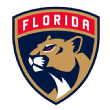
June 17: Florida Panthers
Projected cap space: $19.00 million
2025 draft picks: 4th, 4th (CGY), 5th, 5th (SJ), 6th, 7th
What went right? It's hard to do better than repeat as Stanley Cup champions. It's safe to say that Florida had a pretty good year.
The Panthers proved they're building a dynasty, with three consecutive trips to the Cup Final and now two titles under their belts. But Florida's success this season started well before the postseason.
The Panthers' 98-point regular-season campaign was maybe stronger defensively than offensively, as Florida averaged just 2.72 goals against as the league's seventh-ranked defense. Sam Reinhart led the way for the Panthers up front (again) with a terrific 39-goal, 81-point effort, and Sam Bennett delivered a career-best 51-point showing, while Aleksander Barkov turned in another Selke Trophy-winning performance (and tallied 20 goals, 71 points).
GM Bill Zito went all-in for the Panthers ahead of the trade deadline, acquiring Seth Jones and Brad Marchand, both of whom were excellent in the playoffs (Marchand in particular). The Panthers were all about balance though, and persevered through challenging stretches to put themselves in good position for the postseason. And the Panthers managed to leap right over any roadblocks they came upon.
What went wrong? Well ... not a whole lot. There weren't many moments in the postseason where Florida didn't look in control of its own destiny. The Panthers' second-round series against the Toronto Maple Leafs was perhaps their toughest slog, falling behind 2-0 before rallying to down the Leafs in seven.
Florida also showed its vulnerabilities at times in the Cup Final against the Edmonton Oilers, particularly in a Game 4 collapse where they led 3-0 in the first period and went on to lose in overtime. When the Panthers struggled, it was mainly due to a lack of scoring depth showing up, a rare occurrence for them as the playoffs rolled along.
But more often than not, Florida received enough contributions for all four lines to make up for its deficiencies. And that's why they're champions again.
Keys to the offseason: Florida has a pair of significant pending unrestricted free agents in Bennett and Aaron Ekblad on whom to make decisions, and that will be at the top of Zito's to-do list.
If the Panthers are able to re-sign both skaters, it would likely be with a majority of their available cap space, leaving Florida with either little else to do before next season or working the phones to make a few moves and shore up their depth in other ways.
They will need to figure out a backup goaltender for Sergei Bobrovsky, with Vitek Vanecek on an expiring deal, and filling in a few spots on the blue line will be a priority as well. Florida doesn't have any draft picks in the first three rounds this year -- further proof they are still built to win now -- so once Zito settles on whether Bennett and Ekblad are staying (and at what price), the Panthers can begin to perhaps redefine what the team will look like by fall.
Does Marchand -- another pending UFA -- sign on again as well? He was among the Panthers' most productive postseason performers. That may be enough for the 37-year-old to see another contract headed his way, too.
Realistic expectations for 2025-26: Florida doesn't look to be slowing down. Zito will have them back in position to contend for another Cup -- so long as Bobrovsky (at age 37) can still perform at an elite level.
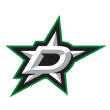
May 29: Dallas Stars
Projected cap space: $5.32 million
2025 draft picks: 3rd, 5th, 5th (NJ), 6th, 7th
What went right? There's no questioning their status as a championship contender. Not that the Stars' aspirations were ever in question, but the moves that GM Jim Nill made throughout the 2024-25 season further reinforced the Stars to win now.
A team that once thought of draft picks as sacred moved on from first- and fourth-round picks in this summer's draft in a trade that returned Cody Ceci and Mikael Granlund. Then Nill moved even more draft capital (two first-round picks and two third-round picks) and promising young forward Logan Stankoven to get Mikko Rantanen, before signing the superstar Finn to an eight-year extension.
All of that helped get the Stars back to the Western Conference finals for the third straight season.
What went wrong? Some of the questions that were present throughout the Stars' playoff run -- such as their depth -- were issues in the conference finals against the Edmonton Oilers. It initially appeared as if the Stars had found a solution with the number of players who contributed to their 6-3 comeback win in Game 1.
But the next three games would see them score only twice, which made the Stars the second team that was in the top five in goals per game during the regular season to be effectively silenced by the Oilers in a playoff series (the Vegas Golden Knights were dispatched in the second round).
Failing to consistently score goals or generate some sort of a breakthrough in other areas is what led to Stars becoming the first team to reach three straight conference finals without advancing to the Stanley Cup Final in NHL history.
Keys to the offseason: Perhaps the only thing more draining than being a championship contender that can't seem to reach the Stanley Cup Final? Figuring out how to remain in contention despite having only so much cap space.
The Stars have built well from within, allowing them to maintain the sort of cap space that has given them an advantage to this point. But with Wyatt Johnston and Jake Oettinger set to receive significant pay bumps on their new deals, and the first year of Rantanen's new contract kicking in, the Stars will need to get creative -- along with making some difficult decisions this summer. Matt Duchene, Jamie Benn, Evgenii Dadonov, Granlund, and Ceci headline the class of unrestricted free agents.
Realistic expectations for 2025-26: Much like they were this season, the Stars will again be among that category of teams in a championship window. But what will make next season hypothetically more challenging is the fact that the young core who have been key performers on those cheap contracts are now making more money. That not only amplifies the need for the Stars to hit on players on team-friendly deals, but it ramps up the pressure to start winning in this part of their window.
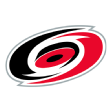
May 28: Carolina Hurricanes
Projected cap space: $36.18 million
2025 draft picks: 1st, 3rd (TB), 4th, 6th, 6th (TB), 7th
What went right? Carolina had another impressive regular season. The Canes finished in second place in the Metro Division, with a 99-point effort that set them up in good position for a long playoff run.
The Hurricanes were strikingly stingy again on defense, finishing in the top 10 in goals-against average (2.80), and their penalty kill was tops in the league (83.6%). Carolina's offense was propelled by Seth Jarvis (32 goals) and Sebastian Aho (74 points), and worked in complement with their dialed-in defense.
The Hurricanes also lucked out in the trade-gone-bad for Mikko Rantanen; while Rantanen didn't stick around, Carolina did get Logan Stankoven in return from Dallas (along with a bounty of picks) when it traded Rantanen away. Stankoven has been a key player for the Hurricanes this postseason, and will be for seasons to come.
Carolina managed to put it all together and get rolling to start the playoffs too, losing a combined two games in the first and second rounds to punch its ticket to a second Eastern Conference finals in three years.
What went wrong? Well, about that conference finals appearance. It did not go well. The Hurricanes lost -- again -- to Florida, although they won one game, which was one more than two years ago. Prior to the Game 4 victory, it was 15 straight losses in conference finals action. Not ideal.
Carolina had benefited from terrific goaltending from Frederik Andersen in the first two rounds, but the Hurricanes' netminder was no match for the Panthers' punishing attack. Coach Rod Brind'Armour replaced Andersen with Pyotr Kochetkov in Game 3, but that did little to slow Florida's roll as they pounded Kochetkov just the same. Andersen was strong in Game 4, but couldn't sustain it in Game 5.
The Hurricanes' offense was no help, scoring three goals total in the series' first three games. That lack of depth up front is what GM Eric Tulsky tried to address in acquiring Rantanen in the first place. Knowing Rantanen wouldn't be sticking around long term -- and was hardly a difference-maker with two goals in the 13 games he did play for Carolina -- Tulsky had no choice but to give him up. Now he'll have to try again at finding ways to put Carolina over the top.
Keys to the offseason: The Hurricanes have ample cap space to use in the offseason. That's a bonus considering they've got some holes to fill.
There's a need for Carolina to get -- and keep -- a Jake Guentzel or Rantanen type of player -- that big, game-breaking talent who can drive their offense in a tough division, and get them a goal when they need it most in the playoffs. While Jarvis, Aho, Andrei Svechnikov and even Stankoven are excellent players, they aren't moving the needle enough for Carolina when it counts. Whether it's another splashy trade or finding someone on the open market to fill that role, the Hurricanes will be better equipped for the 2026 playoffs if they can land a headliner.
Tulsky has draft capital to wield as well, with a 2025 first-round choice a prime asset. The front office also must make decisions on an unrestricted free agent class that includes forwards Jack Roslovic, Eric Robinson, Jesper Fast and Tyson Jost, along with defensemen Brent Burns and Dmitry Orlov.
And speaking of the back end, the Hurricanes are getting long in the tooth on their blue line. An infusion of some younger talent -- along with increased opportunity for Alexander Nikishin (23) and Scott Morrow (22) -- would go a long way.
Realistic expectations for 2025-26: Carolina has too many good players not to be in the playoff field again. It's just a matter of what the results will be like when they arrive. There's reason to question what they can put together after another disappointing showing on the heels of such early playoff promise.
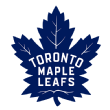
May 18: Toronto Maple Leafs
Projected cap space: $27.49 million
2025 draft picks: 2nd (FLA), 3rd (EDM), 5th, 5th (PIT), 6th, 7th
What went right? The Maple Leafs enjoyed another terrific regular season. Toronto won its first division title in 25 years by finishing fourth overall in points (108) and wielding the seventh-best offense (3.26 goals per game). First-year coach Craig Berube restructured the Leafs into a team that could not only score goals but play a strong collective defensive game, too, resulting in the Leafs' eighth-ranked defense (2.79 goals against).
The goaltending tandem of Anthony Stolarz (21-8-3, .926 save percentage, 2.14 goals-against average) and Joseph Woll (27-14-1, .909 SP, 2.73 GAA) worked seamlessly in Stolarz's first season with the club, and new additions on the blue line -- especially Chris Tanev -- made the Maple Leafs more physically robust than they'd been in years.
The Leafs also got unexpectedly strong contributions from some familiar faces, including John Tavares; the veteran had one of his most productive seasons for Toronto, with 38 goals and 74 points. And rising star Matthew Knies had a breakout season with 29 goals and 58 points, success that he carried over into the postseason, with several solid performances. Speaking of which, the Leafs actually won a playoff round!
What went wrong? Toronto may have skated past the Ottawa Senators with a first-round victory, but the Leafs' postseason demons were alive and well in their second-round clash with the Florida Panthers.
Toronto squandered an early 2-0 series lead, watching it evaporate in Florida's come-from-behind victory in Game 3 and a shutout win in Game 4. The Leafs were booed off their own ice in Game 5's 6-1 drubbing, where Toronto's lack of star power was blatantly obvious. Auston Matthews, Mitch Marner and William Nylander were all goal-less against the Panthers to that point, but they rose to the occasion in Game 6 to drag the Cats back to Toronto for Game 7.
That's where the Leafs' run ended, marking the sixth Game 7 loss for Toronto in the Matthews era. Florida is designed to wear opponents down, and while Toronto blocked shots with gusto the entire series, the Panthers' heavy forecheck and strong play in front of a rock-solid Sergei Bobrovsky was too much to overcome. Toronto's once-potent power play was no help, either, going 2-for-20 in the series.
Granted, the Leafs lost Stolarz in Game 1 of the series to an undisclosed injury, but Woll gave them every chance to take Game 4, was strong early in Game 5 and shut the door completely in Game 6. The Leafs simply couldn't produce offensively, and in hallmark fashion their top skaters failed to show up when it mattered. Berube said Toronto was "overthinking" late in the postseason. That may have been true -- and once again, there's another too-long summer ahead to dwell on what could have been.
Keys to the offseason: First things first: Is Marner still a Maple Leaf next season? The pending unrestricted free agent wanted to play out the final year of his contract before deciding whether to recommit to Toronto. It's time now for both sides to decide whether renewing their vows -- or an amicable split -- makes more sense.
The Leafs will have salary cap space to use on a significant extension, but depending on where Marner hopes to land (likely among the league's highest-paid forwards), Toronto will have to balance his asking price with their other needs. Knies is a restricted free agent in whom the Leafs will want to invest, and Tavares' deal is up, too. Given how the latter performed this season, there has to be interest on both sides to stay together.
There's also the matter of Nicholas Robertson, another pending RFA who has in the past expressed his desire to leave Toronto. Will GM Brad Treliving find a suitable trade partner now?
The Leafs don't have much draft capital, having traded their first-round pick this season for Jake McCabe in 2023, but the cap space they have will be useful on the open market -- and Robertson could come into play as a trade chip as well.
Realistic expectations for 2025-26: Toronto is built to win now, and the team will be back chasing a division title again next season. Will it lead to anything of note in the playoffs? Well, it's easy to wonder what it will take to make that a reality.
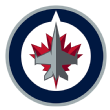
May 17: Winnipeg Jets
Projected cap space: $36.36 million
2025 draft picks: 1st, 3rd, 5th, 6th, 7th
What went right? Any questions about how Scott Arniel's first season as the head coach would go after previous serving as Rick Bowness' assistant were emphatically answered. Especially with the Jets pulling off something they hadn't done since the 2020-21 season: advancing to the second round of the playoffs.
Much of their success stemmed from being able to trust they could receive contributions throughout their entire lineup. That was further fortified by having a consistent defensive structure that was enhanced by Connor Hellebuyck, who is in line to become the first American to win three Vezina Trophies.
What went wrong? There was never a concern about whether the Jets were a playoff team. But there were questions about how the Jets could fare against a team in a legitimate championship window if they got beyond the first round.
Facing the Dallas Stars provided glimpses that the Jets could keep games close for a time, before succumbing to the big period against one of the West's top contenders. It's what happened in Games 1 and 3, when the Stars had a pair of three-goal periods in those contests. Or it was seeing how key players such as Mikael Granlund and Mikko Rantanen paced the Stars with hat tricks and the Jets didn't get the same high-octane offense.
Keys to the offseason: The Jets are going to have a lot of money this summer to address their roster.
Some of that will likely go toward re-signing pending restricted free agent Gabriel Vilardi, who just had his third straight 20-goal campaign while scoring a personal-best 61 points.
Where it gets complicated, interesting or both is figuring out how they'll handle pending unrestricted free agent winger Nikolaj Ehlers. Does he stay? Does he leave? If he leaves, will they do a sign-and-trade and not risk losing him for nothing?
And if he does go, how do the Jets replace a dynamic, seven-time 20-goal scorer?
Realistic expectations for 2025-26: No team is guaranteed a playoff berth. But there are those that are judged more on what they did or didn't do in the postseason compared to what they did in the regular season. That's where the Jets currently live.
The Jets should challenge for a playoff spot in a demanding Central Division. It's just that their well-noted struggles to get out of the first round is what makes the regular season, while important, not the barometer by which they will be assessed. Whether or not they can get out of the first round -- and the second, and beyond -- will be the new litmus test for the Jets.

May 15: Washington Capitals
Projected cap space: $12.38 million
2025 draft picks: 1st, 2nd (BOS), 3rd (CAR), 4th, 5th
What went right? Washington was supposed to be rebuilding, and this season showed the Capitals didn't need long to regroup. They were excellent from the outset of the regular season and quickly climbed atop the Eastern Conference standings. That's where the Capitals stayed most of the season, accumulating the second-most points (111) in the league on the strength of their second-ranked offense (averaging 3.49 goals per game) and superb goaltending from Logan Thompson (31-6-6, .910 SV%, 2.49 GAA).
There was no bigger -- or better -- storyline for the Capitals though than seeing captain Alex Ovechkin make history when he surpassed Wayne Gretzky as the NHL's all-time scoring leader with career goal No. 895 on April 6. It was an individual accomplishment Ovechkin chased with his entire team; his teammates referenced that quest as a constant source of motivation through the ups and downs of their season.
In addition to the Capitals' veteran guard showing off, the Capitals saw terrific growth from some other emerging stars as well, including Ovechkin's frequent linemates Aliaksei Protas (with a 30-goal campaign) and Dylan Strome (who led the club with 82 points). Coach Spencer Carbery deserves ample credit for turning the Capitals around in record time.
What went wrong? The Capitals' greatest strength in the regular season became their biggest challenge by the playoffs. Washington's red-hot offense began drying up in their second-round series against Carolina, as the Hurricanes' stout defense and outstanding goaltending smothered the Capitals' rush attack.
Ovechkin was particularly absent from the scoresheet against Carolina, failing to get on the board until he notched a power-play marker in Game 4. But Washington's depth wasn't the asset it could have been, with the team averaging just over two goals per game.
While Thompson did his best to hold the Hurricanes at bay, he didn't receive enough support to turn those efforts into victories. The Capitals weren't creating high-danger chances like they could in the regular season, and the lack of a net-front presence made it too easy for Frederik Andersen to shut the door.
Meanwhile, Washington's own defensive efforts never matched Carolina's intensity, and the Hurricanes leaned on 10 different goal scorers for a more balanced offense than what Washington rolled out. Carolina also capitalized on a poor Capitals penalty kill (72.7%) to send them into an early summer.
Keys to the offseason: Washington is in a good position for a bright future. In the process of getting there, the Capitals will also be saying a likely goodbye to some critical veteran presences from their past.
T.J. Oshie is a pending unrestricted free agent after missing the entire 2024-25 season with a chronic back issue. Same for Nicklas Backstrom, who missed the entire campaign with a hip injury. With those skaters off the books, the Capitals will be able to restock on the open market, and should be targeting top-nine skaters to help avoid running aground offensively again in the postseason.
The Capitals have other veterans with expiring deals as well -- namely Lars Eller and Anthony Beauvillier -- who have been role players in what was a strong season. Washington can also do some damage at the draft -- whether via trades or using the picks -- with selections in the first five rounds. Then, of course, there's the question of Ovechkin: is he done now after that historic achievement? Or is there another year ahead for him in the NHL? He has one year remaining on his contract.
Realistic expectations for 2025-26: Washington may need some offensive upgrades, but it's nothing so drastic as to keep them from being a playoff team again. Expect to see them trend in a similar direction -- towards the top of the Metropolitan standings -- next season.
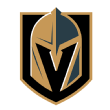
May 14: Vegas Golden Knights
Projected cap space: $9.62 million
2025 draft picks: 2nd, 3rd (WSH), 4th, 5th, 6th, 6th (WSH)
What went right? For all the concerns about how much they lost in free agency last summer, the Golden Knights found solutions. Homegrown talent Pavel Dorofeyev led them in goals in the regular season (35), and others such as Brett Howden had breakout campaigns.
Many of those contributions -- coupled with what they received from their stars and other venerable figures -- allowed the Golden Knights to remain in the category of teams that could challenge for a Stanley Cup. Their depth was certainly on display against the Minnesota Wild in the first round.
What went wrong? In the second round against the Oilers, that depth disappeared. They came into Game 5 trying to find the type of answers that eluded them all series.
Players such as Ivan Barbashev, Tomas Hertl and Howden combined to score 78 goals in the regular season -- but had zero in the series against Edmonton. Their defensemen combined for 35 goals during the regular season, but had only one in the playoffs.
A lack of consistent scoring was pivotal in the series, particularly in the games in which the Golden Knights scored the first goal in an attempt to gain a grasp of control only to watch the series slip through their fingers.
Keys to the offseason: Next offseason will be the one in which the Golden Knights will face some major questions: Franchise center Jack Eichel's current deal runs through 2025-26, while the contracts for Mark Stone, Alex Pietrangelo and William Karlsson run through 2026-27.
But for now, they have 16 players under contract for next season, and Brandon Saad and Reilly Smith are part of a six-player unrestricted free agent class. Nicolas Hague is their key restricted free agent; he has one year of team control remaining before he hits UFA status.
It's possible that the Golden Knights use their cap space to add around the edges, while trying to secure a deal with Hague that works for both sides ahead of what's expected to be a busy 2025-26 campaign.
Realistic expectations for 2025-26: The demand -- as always, for a franchise that has made winning at all costs its hallmark -- is challenging for the Stanley Cup.
But that comes with the caveat that this upcoming season could have two major roster-construction wrinkles: Eichel and Dorofeyev. As noted, Eichel is entering the final year of a contract that sees him earn $10 million annually. As for Dorofeyev, replicating or surpassing the career-high 35 goals he scored this season could see him cash in on a new deal; he'll be a pending RFA that's set to earn $1.835 million in 2025-26. Finding long-term solutions to both situations will be critical.
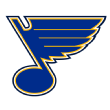
May 4: St. Louis Blues
Projected cap space: $7.15 million
2025 draft picks: 1st, 5th, 6th
What went right? Every move that GM Doug Armstrong made throughout the summer and into the season.
The offer sheets for Philip Broberg and Dylan Holloway led to Broberg, when healthy, having a career-high eight goals and 29 points while logging more than 20 minutes per game. Not to be outdone, Holloway had his first 20-goal campaign.
The trade for Cam Fowler resulted in him having one of the strongest seasons of his career -- and leading the team in scoring for much of the first round.
Moving on from Drew Bannister to hire Jim Montgomery resulted in the Blues gaining a legitimate level of consistency that they used to reach the playoffs for the first time since the 2021-22 season.
What went wrong? Part of the issue was that the Blues could never win a game at Canada Life Centre. The rest stems from the Blues having a proven blueprint that worked twice but failed to be replicated two more times to win the series against the Winnipeg Jets.
Generating a combined 20 high-danger scoring chances in Games 3 and 4 was instrumental in the Blues scoring 11 goals against Connor Hellebuyck in those contests. That created a belief that the Blues could capitalize on the struggles of one of the best goalies of his era, whose regular-season success had yet to translate to the playoffs. But Hellebuyck and the Jets would find a counter en route to advancing to the second round.
Keys to the offseason: For starters, the Blues don't have a ton of cap space. But they have only one pending restricted free agent in goaltender Joel Hofer, while center Radek Faksa and defenseman Ryan Suter are their only pending unrestricted free agents.
Then there's the Torey Krug situation. He missed the entire regular season and playoffs after undergoing ankle surgery in the preseason. Getting Krug back would not only give the Blues a logjam of defensemen, but it would give them six blueliners under contract who are each earning more than $4 million annually -- and all of them except Broberg have some form of trade protection.
Realistic expectations for 2025-26: Returning to the playoffs, or at least remaining in the hunt for a playoff spot late into the season, is the plan. The Central Division is still going to have teams such as the Avalanche and Stars that are in a championship window, with the Jets trying to establish themselves as a perennial threat.
Meanwhile, the Wild are expected to be an active player in free agency, while the same could be said for Utah after it stayed in contention for a wild card entering the final two weeks of the season. Adding the Blues to that equation means there will be six teams (at minimum) in the division legitimately vying for a playoff spot in 2025-26.
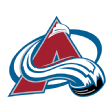
May 3: Colorado Avalanche
Projected cap space: $8.70 million
2025 draft picks: 4th (VAN), 7th
What went right? Adjustments and course corrections. By December, the Avalanche already had concerns about their supporting cast -- along with the problems created by an inconsistent goaltending tandem.
That prompted Avs general manager Chris MacFarland to make a series of trades that saw Colorado do everything from get a new tandem in net -- led by Mackenzie Blackwood -- to make key additions at the trade deadline to make the Avs one of the more dangerous teams heading into the playoffs. Their first-round exit came at the hands of a team that's seeking to make its third straight conference finals appearance.
What went wrong? The margins for error were extremely tight. Then again, that was likely to be the case in a first-round matchup of two teams that are clearly in a championship window -- and both finished with more than 100 points in the regular season.
Opening the series against the Dallas Stars with a 5-1 win and taking Game 4 with a 4-0 win spoke to just how commanding the Avs could be against a fellow Stanley Cup challenger.
But the overtime wins the Stars had in Games 2 and 3 were the difference in the Avs either sweeping the series or, in this case, being knocked out in seven after an impressive Game 6 win. They even led 2-0 in Game 7, only to witness an historic third period by former teammate Mikko Rantanen.
Keys to the offseason: Determining the best way to spend their limited cap dollars is the task every team in a championship window faces. The Avalanche know this reality all too well with the biggest factor being Gabriel Landeskog's health. While his return provides the Avs with a top-six forward, his $7 million cap can't be moved to long-term injured reserve to create financial flexibility as the team had done the past few years.
That's what leaves the Avs with a projected $8.70 million in cap space to address a seven-player unrestricted free agent class that includes Jonathan Drouin and trade deadline pickups Ryan Lindgren and Brock Nelson.
Realistic expectations for 2025-26: They're still expected to remain among the top contenders that will challenge for a Stanley Cup. The Avs have their core and quite a few members of their supporting cast under contract through at least next season. What they do in the offseason will play a role in supplementing what they already have, with the notion they're going to be among that handful of Western Conference teams that feel the title is within reach.
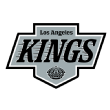
May 1: Los Angeles Kings
Projected cap space: $23.48 million
2025 draft picks: 1st, 3rd, 4th, 5th, 6th, 7th, 7th (PHI)
What went right? Nearly everything they did in the regular season. Something that might get lost within the discourse around the Kings was their 48 wins tied the franchise record for the most single-season victories, while their 105 points was also tied for the most in their history.
They overcame losing Drew Doughty to a preseason injury, finally found a stable presence in goal with Darcy Kuemper, established themselves as one of the strongest defensive units in the NHL and received contributions throughout the entirety of their lineup-- to the point that 14 players had more than 20 points, with five of them being defensemen. But ...
What went wrong? Losing to the Edmonton Oilers in the first round ... again.
Winning the first two games of the series by scoring six goals in each contest created the early impression that this could be the year that saw the Kings finally advance to the second round for the first time in more than a decade. Instead, their first-round loss has raised questions:
Why did they struggle to make adjustments beyond Game 2? Why were they able to build a commanding lead in Game 2 yet blew consecutive leads in Games 3 and 4? Why is it that just simply typing Jim Hiller's name in an internet search is immediately met with "Jim Hiller challenge" because there's a belief his Game 3 decision might have been the turning point in the series? And then there's one more pressing question to consider given their latest first-round exit.
Keys to the offseason: Are the Kings going to stay the course or do they use this offseason to make significant changes?
If they move on from Hiller, that will give the Kings their third head coach since February 2024 when they fired Todd McLellan. Or could ownership be inclined to look at a front office that, while making several moves to improve the roster, hasn't quite found the definitive combination to get the Kings beyond the first round?
Anything the Kings do this offseason will be with the purpose of not only trying to win in the first round but figuring out how they can win against elite teams in the conference.
The Kings have a six-player UFA class that's led by Vladislav Gavrikov and Andrei Kuzmenko. Should they elect to get deals done for at least those two, it leaves the Kings with the financial flexibility to address the roster to compete against the best in the west at the most demanding time of the season.
Realistic expectations for 2025-26: Maybe more than just making the playoffs? They have the majority of their roster coming back, while also having quite a bit of cap space. Although nothing about that exact circumstance means there are guarantees, there is an expectation that the Kings will once again be challenging for a playoff spot.
But what they do in the offseason, however, will come with this one crucial question: Will it be the difference in the Kings advancing to at least the second round -- or could it result in another promising run cut short by an early postseason exit?

May 1: Minnesota Wild
Projected cap space: $21.88 million
2025 draft picks: 2nd, 4th (TOR), 5th (CBJ), 6th
What went right? Navigating Kirill Kaprizov's absence to make the playoffs. Before Kaprizov sustained the December injury that kept him out until April, the Wild were establishing a case for why they might be one of the best teams in the Western Conference. They were scoring enough goals in tandem with a defensive structure and goalie performances that allowed them to excel in tight situations.
But Kaprizov's injury resulted in the loss of their leading scorer, which prompted the Wild to rely on their defensive identity in order to capture a wild-card spot and advance to the playoffs.
What went wrong? Their ability to win one-goal games went dormant. Bizarre as it sounds, the trait that allowed the Wild to manifest their playoff berth was also the one that doomed them to losing in the opening round for the fifth time in the past six seasons.
One of the arguments for why the Wild could reach the second round was because they won 18 of their 28 one-goal games in the regular season. But to lose not just one, but two games in a row to the Vegas Golden Knights by a single goal in overtime? It represents how, in future seasons, the Wild might not be that far off from reaching the second round for the first time since the 2014-15 season.
Keys to the offseason: They have lots of cap space. That's not always been the case in Minnesota. But it will be this offseason for a franchise that now has the necessary space to strengthen a roster that's had to largely rely on its homegrown talent.
One of the questions the Wild must answer, however, is what becomes of Marco Rossi. A first-round pick in 2020, Rossi emerged into a top-six center, but had 14 points throughout February, March and April after he scored that same amount in January. He bounced back to score two goals and three points in the playoffs entering Game 6, but had the third fewest minutes per game of any Wild player.
Realistic expectations for 2025-26: Maybe more than just making the playoffs? Having more than $20 million in projected cap space is going to make the Wild something of a player in free agency. How they spend that money could then set the expectations for the Wild. Even with that caveat, there is a belief that the 2025-26 season has a chance to be one that sees the Wild get additional offensive help to keep pace in the treacherous Central Division -- with the intent of being a team that could create problems for opponents in the postseason.
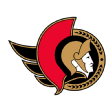
May 1: Ottawa Senators
Projected cap space: $18.44 million
2025 draft picks: 1st, 3rd (FLA), 4th (SJ), 5th, 6th, 7th
What went right? Ottawa took a crucial step forward by finally making the postseason. It signaled that, after a seven-year absence from the playoff field, the Senators' rebuild is essentially over. And expectations should increase accordingly.
Ottawa showed it could be a stout defensive team, buying into the structure that first-year head coach Travis Green laid out and refused to back down from until his players embraced executing the right way. The Senators' young stars -- namely Brady Tkachuk, Tim Stutzle and Jake Sanderson -- all showed significant growth in their games, and the playoff experience earned should be invaluable to them (and the rest of the Senators) moving forward.
Linus Ullmark also proved he could give Ottawa something it hasn't had in years: a dependable No. 1 goaltender in whom to feel confident. The Senators' foundation is on sound, solid ground.
What went wrong? The postseason is a different beast. It's a lesson that can only be learned -- and truly appreciated -- once you've been there. Ottawa was an average offensive team throughout the regular season (collecting fewer than three goals per game), and its scoring dried up even further in the playoffs (sliding to just two goals per game). The Senators' penalty kill also repeatedly let them down in the regular season (at 77.7%) and got even worse in the playoffs (68.8%).
Aside from a Game 5 shutout, Ullmark stumbled when the Senators needed him to stand tall, posting a poor .883 save percentage and 2.80 goals-against average in the postseason. It's not that Ottawa didn't come close in that first-round series against Toronto -- three games were decided in overtime, after all, one of which the Sens won -- but the Senators were just too green to take advantage of the Toronto Maple Leafs' occasional mistakes.
Now that the Senators have established their defensive game, it's time they figure out how to bring a consistent offensive effort to match.
Keys to the offseason: The Senators have some in-house decisions to make on a pair of veteran skaters approaching free agency. Claude Giroux has been an integral part of Ottawa's lineup and dressing room since arriving three seasons ago. If the 37-year-old plans to keep playing, it would behoove the Senators to retain his services, for depth and mentorship.
Then there's Anton Forsberg. He worked in tandem with Ullmark this season, and should the 32-year-old leave, GM Steve Staios will be determining whom to pair with Ullmark in the coming seasons.
Ottawa has a handful of other forwards who could depart in free agency, so the Senators should expect to be somewhat active in free agency, shoring up their bottom six to ensure they can complement the elite scoring threats they have in Tkachuk, Stutzle & Co. Ottawa worked hard to be in a position where there aren't many gaps to fill, though. The Senators don't necessarily need to be splashy, just smart.
Realistic expectations for 2025-26: Ottawa should absolutely expect to compete for a playoff spot next season. It's never easy getting over the disappointment of a swift postseason exit, but those frustrations will add fuel to the fire for next season to show that this was only the beginning of the Senators' next chapter.

April 30: Tampa Bay Lightning
Projected cap space: $9.10 million
2025 draft picks: 2nd (LA), 4th (EDM), 5th, 7th, 7th (MIN), 7th (SJ), 7th (UTA)
What went right? Tampa Bay proved it was (still) a powerhouse in the regular season, with a league-leading offense (averaging 3.56 goals per game), a top-five power play (at 25.9%) and arguably the NHL's best forward in Nikita Kucherov (who paced his peers with 121 points). And the Lightning managed to stay out front even after parting ways with former captain Steven Stamkos. His successor with the C -- defenseman Victor Hedman -- put in another elite campaign anchoring Tampa Bay's blue line and penalty kill.
The Lightning's old hands were up to their same tricks in every area, especially goaltending. Andrei Vasilevskiy earned yet another Vezina Trophy finalist nod on the strength of his season (.921 save percentage, 2.18 goals-against average). Jon Cooper, now far and away the NHL's longest tenured head coach, capably guided Tampa Bay through the season's inevitable rough patches, and somehow the Lightning always came out for the better.
They reached the postseason for an eighth straight year to make good on GM Julien BriseBois' repeated decision to sacrifice long-term possibility (via draft picks) to stay focused on the chance of present-day success.
What went wrong? The Lightning were rightly expected to dominate offensively in the playoffs, too, and, well, it didn't happen. Tampa Bay averaged the second-fewest goals per game among postseason teams (2.25), and Kucherov was particularly absent, with zero goals in the Lightning's first four games against the Florida Panthers. And that power play? Nonexistent, at 1-for-15, as Tampa Bay was on the ropes going into Game 5.
The Lightning also had to deal with the theatrics of a physical first-round series that included Matthew Tkachuk's blistering hit on Jake Guentzel and losing Brandon Hagel twice (first to a suspension in Game 3 for his hit on Aleksander Barkov, and then to a vicious elbowing by Aaron Ekblad).
That was only part of the story, though. The Lightning were often their own worst enemy. Tampa Bay's defense let them down in Game 4 when, after the Lightning had held a lead with the potential to tie their series 2-2, a pair of late goals against (scored 11 seconds apart) cost them a victory. It was a tough comedown, having already seen Hagel depart as well. In the end, the Lightning didn't do enough with their opportunity, and it was over too soon.
Keys to the offseason: Tampa Bay will have some cap space (for once), so BriseBois can get creative to bolster the Lightning next season. What does that look like, exactly?
Is it right for Tampa Bay to try running it back again after a third consecutive first-round exit? Does BriseBois need to change tactics to see the Lightning's chances improve at that most crucial time of year? BriseBois has mortgaged much of Tampa Bay's future (via trade of players and picks) to keep pushing their chips in on another Stanley Cup run. Will he be aggressive in pursuing that again? If so, it's all about the trade and free agent market for Tampa Bay.
The Lightning have just three picks in the first five rounds of the draft (one second, one fourth and a fifth), so maybe BriseBois could leverage those somewhere.
Otherwise, it will just be about filling in the gaps. Nick Perbix is the only UFA of note for BriseBois to consider, but he will want to ensure scoring depth won't be an issue next year at this time. Adding another goaltender to play with Vasilevskiy (current backup Jonas Johansson is a UFA) would also be prudent.
Realistic expectations for 2025-26: The Lightning's regular-season performance put them in the running for an Atlantic title. It's hard to think they'll fall off entirely from there -- not after BriseBois went all-in getting Guentzel on a long-term deal and when Kucherov is still in his prime. There's little doubt Tampa Bay will push to be back in the postseason.
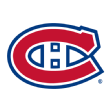
April 30: Montreal Canadiens
Projected cap space: $10.53 million
2025 draft picks: 1st, 1st (CGY), 2nd, 2nd (PIT), 3rd, 3rd (NJ), 3rd (VAN), 4th, 4th (BOS), 5th, 6th, 7th
What went right? Montreal reached the postseason in Year 3 of what has been an arduous rebuild. That's no small feat. The Canadiens stumbled out of the gate this season but didn't let early adversity deter them from powering through.
When the Canadiens topped Buffalo 5-2 on Nov. 11, it was practically the start of a new season for the team -- Montreal went 36-22-9 to the finish line, earning the league's 11th-best points percentage in that stretch and eventually the Eastern Conference's final wild-card playoff spot.
It wouldn't have been possible without some exceptional performances from Nick Suzuki and Cole Caufield, a breakout showing from rookie defenseman Lane Hutson and strong secondary contributions from Patrik Laine, Juraj Slafkovsky and Jake Evans. Star prospect Ivan Demidov was a nice surprise addition to the playoff roster and did not look out of place.
Coach Martin St. Louis also deserves credit for treating the Canadiens like they deserved to be in playoff contention. That sort of confidence is what fuels a team to exceed expectations -- which is exactly what Montreal was able to accomplish.
What went wrong? The Canadiens' scoring was top-heavy in the regular season, and that caught up to them again in the playoffs. While facing the Washington Capitals was always going to be an uphill battle, Montreal made it harder when, outside of Caufield, Suzuki and Christian Dvorak, they didn't have many offensive contributors.
Goaltending also became an issue after starter Sam Montembeault was injured in Game 3, to be replaced by backup Jakub Dobes. The latter performed admirably given he had appeared in all of 16 NHL games before the series, but Montreal losing its No. 1 in Montembeault certainly weakened the team as well. Dobes and his defenders lacked effective communication, and it cost the Canadiens on the scoresheet.
In the end, it was the Canadiens' lack of postseason experience that shuttered their run. Washington capitalized on seemingly every Montreal mistake, learned behavior by a veteran team that has been used to winning. While the Canadiens were impressive in areas such as special teams during their run, it's the details (like key faceoff wins, for example) that can be daunting. Montreal will have to learn from its mistakes to take positive steps next season.
Keys to the offseason: The way GM Kent Hughes has handled the Canadiens' rebuild so far -- words such as "slow" and "steady" come to mind -- suggests he won't be using Montreal's playoff tenure as an excuse to start fast-tracking.
The Canadiens have two picks in each of the first two rounds of this draft; those selections will be vital for Montreal as it continues stocking the cupboards with young talent to carry the franchise forward. Hughes will have to address the goaltending situation in some fashion, though, likely with a free agent signee to support Montembeault while Dobes continues to cook in the minors.
And then there's the club's scoring depth. Hughes acquired Laine last offseason to boost the Canadiens up front -- and he did add 20 goals and 33 points -- but the often-injured forward appeared in only 52 games. Montreal needs more from Laine and a couple other skaters Hughes could see playing a top-nine role for the Canadiens. Even when Suzuki and Caufield are rolling, it's not enough to expect they can carry Montreal's offense again -- especially come playoff time.
Realistic expectations for 2025-26: Montreal will be in the thick of another fight to earn an Eastern Conference playoff spot. The Atlantic might just be the league's most competitive division, though. If the Canadiens want to stay in the mix again, some changes should be made to give them a boost over their division rivals.
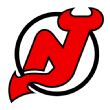
April 29: New Jersey Devils
Projected cap space: $13.86 million
2025 draft picks: 2nd, 2nd (EDM), 3rd (VGK), 4th, 6th, 6th (SJ)
What went right? New Jersey overcame significant adversities this season to be a playoff team. It's a testament to the Devils' resiliency that even after losing top skater Jack Hughes in March they managed to stay in the hunt and punch their ticket. The Hughes injury highlighted the seasons that some of New Jersey's other burgeoning stars were having, including Jesper Bratt (in an 88-point campaign) and Nico Hischier (a dominant two-way center, who scored 35 goals).
The Devils owed a large portion of their success to improved goaltending from Jacob Markstrom -- and GM Tom Fitzgerald for finally shoring up that position by acquiring Markstrom in the first place. The veteran was solid in the regular season, and soared during the Devils' postseason run as one of the best goaltenders in any first-round series.
New Jersey's first-year head coach Sheldon Keefe managed to implement a solid system and get the Devils to buy in, even when the going got tough. New Jersey should rightly feel good about what a fully healthy lineup can look like moving ahead.
What went wrong? Ah, injuries. They caught up big time for these Devils. Hughes was gone in March, while Dougie Hamilton and Jonas Siegenthaler missed significant time in the regular season before returning. And throughout New Jersey's playoff run, its defensemen began dropping like flies, with Brenden Dillon, Luke Hughes and Johnathan Kovacevic all missing in action. Not even Markstrom's brilliance could account for that many important players sitting out.
The Devils didn't help themselves, though. New Jersey was a whopping 0% on the power play, averaged just 1.75 goals per game and struggled on the penalty kill (69.2%). Outside of Hischier -- who collected three goals in the postseason -- the Devils simply couldn't get rolling offensively.
In a way, it's hard to assess New Jersey's efforts fully given how banged up it became. How much better might the Devils have been across the board had the infirmary not filled up? We'll never know. It's clear that Fitzgerald's inaction at the trade deadline (where he made minor moves such as adding third-line center Cody Glass and blueliner Brian Dumoulin) hurt New Jersey in the long run.
Keys to the offseason: Fitzgerald has a few things to figure out for the Devils. His top priority is pending restricted free agent Luke Hughes and figuring out what the 21-year-old's next contract will look like.
Then there's New Jersey's goaltending, and who will be Markstrom's partner next season. Jake Allen is set to hit free agency, and Nico Daws may not be ready for full-time backup duty.
Free agency should be filled with skaters for Fitzgerald to parse through in order to revamp the Devils' offense. The Devils have five veterans hitting unrestricted free agency, and a pair of RFAs in Glass and Nolan Foote. Inaction didn't serve New Jersey well in the past, and there's a need to infuse their lineup with at least a couple viable scoring threats to keep the Devils from turning top-heavy again next season.
Realistic expectations for 2025-26: New Jersey has felt notoriously hard to predict in recent years. It has oscillated from winning a playoff round to not making the postseason at all. If the Devils can keep (most) everyone available next year, though -- and make some offseason adjustments -- they should expect to be top contenders in the Metro again.
The non-playoff teams
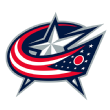
April 16: Columbus Blue Jackets
Projected cap space: $42.08 million
2025 draft picks: 1st, 1st (MIN), 3rd, 4th, 6th, 7th, 7th (VGK)
What went right? Columbus stayed in the playoff race until the final week. That alone is a victory for this group. The Blue Jackets set out to play meaningful hockey in March and April and that's what they did through a special season that will give Columbus confidence to enter 2025-26 as a viable postseason contender.
Zach Werenski had a Norris Trophy-caliber campaign, with a team-leading 75 points through 76 games. Rising stars Kirill Marchenko, Kent Johnson and Adam Fantilli showed their continued maturity in great seasons. Overall, the Blue Jackets' 11th-ranked offense (with 3.17 goals per game) exceeded expectations. Columbus showed real progress over the course of an emotionally turbulent season.
What went wrong? The Blue Jackets were bitten by the injury bug. Boone Jenner, Erik Gudbranson and Sean Monahan all missed significant time with various ailments. That hurt Columbus from the get-go, with no Jenner or Gudbranson for the first few months of the season.
The Blue Jackets' goaltending was subpar too, with Elvis Merzlikins owning a middling .892 save percentage as the club's No. 1. It's no wonder Columbus finished sixth worst in goals-against average (3.42) and they were among the league's worst teams in allowing third-period markers. The Blue Jackets' youth shone through in good ways and bad throughout the year, particularly against tougher opponents, and it's something they'll have to learn from for the season ahead.
Keys to the offseason: Columbus has a pair of first-round draft choices to play with this season, and that's a good thing for GM Don Waddell. He knows how green this franchise still is, and wants to keep building a foundation that the Blue Jackets benefit from for years to come. There are also important RFAs to negotiate with, including Dmitri Voronkov and Daniil Tarasov.
In free agency, Waddell can shift focus to Columbus' netminding. Merzlikins hasn't come up with a season save percentage above .900 since 2021-22. Can Columbus expect to take a step forward if Merzlikins is their go-to guy in the crease next year? Can they give the reins to Jet Greaves, who closed out the season with a dominant stretch?
Waddell wasn't active at the March trade deadline so as not to disrupt his club's chemistry. This summer he can make some meaningful changes that give the Blue Jackets a solid boost by September's training camp.
Realistic expectations for 2025-26: Columbus should be pressing for a playoff berth. They nearly corralled one this season, and the confidence that injected into the team could carry over to next season and beyond. As long as the young players can stay on their positive trajectory, there's considerable depth for Columbus to lean on.
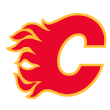
April 15: Calgary Flames
Projected cap space: $36.21 million
2025 draft picks: 1st (FLA), 1st (NJ), 2nd (COL), 3rd, 5th, 6th, 7th
What went right? The Flames made progress in more ways than one. They went from finishing with 81 points in 2023-24 to challenging for a playoff spot until the final week.
But what might get lost is that they established an identity. Whether it be with their roster, their coaching staff or their front office, change has been a constant with the Flames for the last few seasons. This season saw them attain and then maintain a level of continuity that could see them contend for a playoff spot -- if not make the playoffs -- next season. Dustin Wolf was a revelation in goal, cementing his status as the Flames' No. 1 goalie moving forward, and making a Calder Trophy case.
What went wrong? An offensive disconnect. Normally a lack of goals can be traced back to challenges in several areas. But a look under the hood at their underlying numbers paints a confusing picture.
The Flames were top 10 in shots per 60 minutes, and were 13th in scoring chances per 60. Yet they were in the bottom third when it came to high-danger chances per 60. When combined, those factors led to the Flames finishing with the second-fewest goals per game, and having the NHL's second-worst shooting percentage.
Keys to the offseason: Securing new deals for pending restricted free agents Kevin Bahl, Matt Coronato and Connor Zary is a priority, given what they mean to both the present and future of the Flames.
After those deals are in place, the Flames will still have quite a bit of cap space to address their needs -- perhaps with some more consistent sources of offense? Whatever the front office decides, they must do so with the notion of getting one step closer toward reaching the postseason.
Realistic expectations for 2025-26: Making the playoffs. Whenever teams get this close to a playoff spot without making it, there's an expectation that the following season should include a playoff berth. Some of that will depend upon what happens in the offseason. Not only with the Flames, but with other clubs in a competitive Western Conference where 11 teams will finish with 89 points or more.

April 14: Anaheim Ducks
Projected cap space: $39.55 million
2025 draft picks: 1st, 2nd (WPG), 3rd, 3rd (TOR), 4th (DET), 5th, 5th (EDM), 6th, 7th
What went right? The team's young core made progress. Unlike his rookie season, Leo Carlsson wasn't limited to a certain number of games, and the result was a 20-goal season. Goaltender Lukas Dostal won 20 games, and was in the top 20 in save percentage. Cutter Gauthier flirted with a 20-goal season as a rookie. Jackson LaCombe went from 17 points in 71 games in 2023-24 to having 14 goals and 43 points in 70 games, averaging an additional three minutes of ice time. Mason McTavish had his first 20-goal and 50-point season.
Those players are all key building blocks, and all played a role in the Ducks finishing with more than 70 points after consecutive, sub-60-point seasons.
What went wrong? The defensive infrastructure around Dostal. After finishing the 2023-24 season with a minus-91 goal differential, the Ducks needed to be better in the defensive zone in 2024-25. This season, they did cut the differential to minus-34, which speaks to some progress. But their underlying metrics prove there's still more work to be done. Natural Stat Trick's data shows that the Ducks gave up the NHL's most shots per 60 minutes, the most scoring chances per 60 and the most high-danger chances per 60.
Keys to the offseason: Again, it goes back to the young core. Dostal is a pending restricted free agent and is expected to receive a significant increase from his $812,500 salary. McTavish timed his first 20-goal season well; his entry-level contract ends, meaning he'll also need to sign a new deal this offseason. Securing those contracts should still give the Ducks quite a bit of cap space as they seek to add more help around their core for the next phase.
Realistic expectations for 2025-26: In a way, they appear to be on the same path the Utah Hockey Club took in 2024-25. Although the playoffs might not be in reach next season, the Ducks were nearly at a point-per-game pace. Another year of experience for their core -- coupled with what they could do in free agency -- could have them contending for a wild-card spot until next season's final weeks.

April 14: Boston Bruins
Projected cap space: $27.14 million
2025 draft picks: 1st, 2nd (CAR), 2nd (STL), 3rd, 4th (PHI), 5th, 6th, 7th
What went right? The best thing Boston did this season was lean all the way into a rebuild. It was inevitable that after a decade of perennial playoff contention the Bruins were going to take a step back -- and take stock. GM Don Sweeney's early coaching change -- from Jim Montgomery to Joe Sacco -- didn't give Boston a boost, and by the trade deadline it was smart for Sweeney to be a big-time seller. The Bruins acquired valuable draft capital -- including four picks in the first and second rounds -- and they added some intriguing new faces such as Casey Mittelstadt and Fraser Minten. Some burgeoning late-season chemistry between David Pastrnak and Morgan Geekie is a nice bonus for the Bruins as a potential pairing to watch.
What went wrong? Boston lost seven of its first 11 games. That was hardly a good omen for what was ahead. The Bruins' calling card has long been its defensive play, so losing top defenseman Hampus Lindholm to a season-ending patella fracture in mid-November was crushing. Montgomery was fired the same week. Jeremy Swayman -- following a contentious contract dispute -- was mediocre in net. And there was little help from the Bruins' offense in making up for any of their defensive and goaltending issues. Boston is 29th in scoring, averaging just 2.63 goals per game, and on the power play (15.5%).
Charlie McAvoy's upper-body injury in early February at the 4 Nations Face-Off was another gut punch. It's no wonder Sweeney keyed on major changes -- such as moving on from captain Brad Marchand -- considering how much these Bruins pale in comparison to what previous teams produced.
Keys to the offseason: The Bruins need a permanent head coach. Sweeney could opt to remove Sacco's interim tag or explore who else is available. Once Sweeney has that person in place, they can start preparing for an important upcoming draft in which Boston will have a high first-round selection and two picks in the second round. Those picks take on a greater meaning now considering the Bruins don't have a deep prospect pool. The focus then shifts to determining which of Boston's young players will be ready to take a leap in the NHL, and how the Bruins will prioritize adding veteran players around them in free agency. The rebuild will be in full swing.
Realistic expectations for 2025-26: Boston still has a 40-goal scorer in Pastrnak. If Lindholm and McAvoy return to full health, and Swayman can be a game-changer in net again, there's hope for the Bruins to be a fun club to watch -- if not one that reaches the playoffs after a one-year absence. It's not as if they're starting from scratch.

April 14: Buffalo Sabres
Projected cap space: $22.32 million
2025 draft picks: 1st, 2nd, 3rd, 4th, 4th (MIN), 5th, 6th, 7th, 7th (NSH), 7th (WSH)
What went right? Buffalo proved this season it is capable of being a playoff team. The Sabres overcame a slow start to hold a postseason slot at Thanksgiving, which is often a good indicator of a club's potential to stay there through the season. Tage Thompson had a terrific season, scoring 44 goals and averaging a point per game; when the Sabres do finally break through, they'll have him in large part to thank for keeping their offensive engine going. Rasmus Dahlin also continues to be a standout with 62 points from the back end.
GM Kevyn Adams was able to trade underperforming Dylan Cozens and added Josh Norris (injured for most of his Sabres' tenure to date) for the future.
What went wrong? The Sabres have failed to qualify for the playoffs in 14 straight seasons. That's tied with the New York Jets for the longest active drought in major professional sports. But Buffalo had its chance. The Sabres were in the mix until a 13-game winless streak through December torpedoed things. And Adams didn't do anything at the trade deadline to make Buffalo better despite its many flaws. The Sabres' collective goaltending was awful, with the league's second-worst save percentage. Buffalo gives up the fourth-most goals per game (3.47) and that's all the more disappointing considering the Sabres are seventh in scoring (3.27).
The Sabres can be their own worst enemy. Ditto with how Buffalo started strong -- with the third-most first period goals -- only to offer up the fourth most in the third period. The Sabres' attention to detail wasn't where it needed to be, and expected growth from players such as Jack Quinn and Zach Benson didn't materialize.
Keys to the offseason: This was Adams' fifth season in Buffalo -- all, obviously, without a playoff appearance. Will ownership keep him on for another kick at that can? It was Adams who installed Lindy Ruff as coach (again) last season, and that alone might keep Adams around. The Sabres have several personnel decisions to make from there. Quinn, JJ Peterka, Bowen Byram, Devon Levi and Ryan McLeod are all restricted free agents. Who will Buffalo retain -- and who winds up without a qualifying offer?
Then it's on to additions from the outside. The Sabres need stronger goaltending next season, and if Ukko-Pekka Luukkonen and Levi can't provide it as a tandem, then Adams must explore the market for a veteran who can either support one of them or take the reins as a No. 1. That would go a long way in supporting Buffalo toward consistently being the team it has been of late, winning 10 of 13 through March into April -- when, unfortunately, it was all too little, too late.
Realistic expectations for 2025-26: Dare we say it? Playoffs. That's where Buffalo absolutely must get. And they have the talent to do it. It's on management to fill in the gaps and get the Sabres out of their historic skid.

April 14: Chicago Blackhawks
Projected cap space: $29.17 million
2025 draft picks: 1st, 1st (TOR), 2nd, 2nd (DAL), 3rd, 4th, 4th (NYR), 6th, 7th
What went right? The Seth Jones trade. After Jones told Blackhawks management that he wanted to be moved to a contender, how would they strike a deal for a player with three more years on his contract worth $9.5 million annually?
Blackhawks GM Kyle Davidson found a suitor in the Panthers, and received a 2026 first-round pick and goalie Spencer Knight, while retaining $2.5 million of Jones' salary each of the remaining seasons. The trade got the Blackhawks their goalie of the present and future in Knight, and provided them with another first-round pick for 2026, extending a streak of multiple first-round picks dating to 2022.
What went wrong? There was only nominal improvement after one of the more aggressive free agency windows of any team last offseason. They had 22 wins through 78 games, and though they trimmed their goal differential from minus-111 in 2023-24 to minus-74, it was still a season of frustration that peaked with the firing of coach Luke Richardson after 26 games, replacing him with interim coach Anders Sorensen.
Keys to the offseason: Does Sorensen get the full-time coaching job, or do the Blackhawks go in another direction? There's also a discussion about what to do with Ryan Donato, who led the team in goals this season. Donato is a pending unrestricted free agent, who is having the best season of his career. The Blackhawks obviously have the cap space, but might it be better spent elsewhere?
Once they have agreed upon new deals for their four-player restricted free agent class that includes Philipp Kurashev and Arvid Soderblom, the Blackhawks could use the remaining money while having one eye on what lies ahead after the 2025-26 season.
Realistic expectations for 2025-26: Next season will be a crucial one, mainly because another season without significant progress could prompt the front office to face bigger questions; after all, the Blackhawks are looking to reach the 70-point plateau for the first time since 2019-20.
So, what does the future look like? Connor Bedard, Frank Nazar and Knight, who are all central to their future plans, are going to be entering the final years of their respective deals. Bedard and Nazar are coming off their entry-level contracts, and Knight would be seeking his third deal -- but his first as a No. 1 goalie.

April 14: Detroit Red Wings
Projected cap space: $22.98 million
2025 draft picks: 1st, 2nd, 3rd, 3rd (NYR), 4th (TB), 5th, 6th, 7th, 7th (STL)
What went right? Detroit showed its tenacity and resilience multiple times this season. The Red Wings overcame a slow start by leaning into a coaching change -- from Derek Lalonde to Todd McLellan -- that ignited the team's December surge into a playoff spot. Detroit fell in and out of contention until February and looked ready to go on a run. Leading that charge was captain Dylan Larkin -- with 29 goals this season -- and Lucas Raymond, who leads Detroit in points with 75. Raymond's development has been especially positive for Detroit and signals how he can continue carrying their offense into the future. The Red Wings also must feel good about being buoyed by a fourth-ranked power play (27.6%).
What went wrong? The Red Wings' defensive play has been a hindrance for years. This season was no exception. Detroit gave up the 12th-most goals against per game (3.14), while ranking 23rd in scoring (2.81). That's a tough combination to overcome. The Red Wings' putrid penalty kill was also worst in the league (69.6%), another indication of their defensive deficiencies.
GM Steve Yzerman didn't do much at the trade deadline to address any of the Red Wings' problems, and Yzerman's continued failure to add impact players in free agency is showing in how Detroit continues to stop short of reaching the playoffs. The Red Wings need consistency, and a strong defensive structure players buy into and can execute. There wasn't enough of it this season to get Detroit out of its nine-year playoff drought.
Keys to the offseason: Yzerman isn't one for making wild moves. But even he must be open to trying something new. There are internal choices to make, including on key RFAs Albert Johansson and Elmer Soderblom, and veterans Patrick Kane and Alex Lyon are both pending UFAs. How drastic Yzerman gets in terms of personnel turnover could foretell where Detroit goes from here.
The Red Wings need more scoring and have been top-heavy in that respect, relying on Larkin, Raymond and Alex DeBrincat for a large chunk of their output. Improving depth there, with proven defense-minded talent, will help the Red Wings keep up with their Atlantic rivals. Generally boosting the blue line wouldn't hurt, either.
Realistic expectations for 2025-26: Detroit has playoff potential. They've shown it repeatedly. The Red Wings' goal going into next season should be as contenders for the postseason. The question is whether Yzerman provides Detroit with more resources to get there.

April 14: Nashville Predators
Projected cap space: $17.26 million
2025 draft picks: 1st, 1st (TB), 1st (VGK), 2nd, 2nd (TB), 3rd, 4th, 5th, 6th, 6th (COL)
What went right? Their prospects. Of note, Matthew Wood averaged more than a point per game at the University of Minnesota before signing a professional contract. Joey Willis went from scoring 29 goals in his first two OHL seasons combined to having 27 goals this season. At the NHL level, Justin Barron, Zachary L'Heureux and Fedor Svechkov had expanded ice time.
What went wrong? Everything else. They went from being a playoff team that spent big in free agency to get Steven Stamkos, Jonathan Marchessault, Brady Skjei and Luke Schenn to having the third-worst record in the NHL. They were consistently disconnected. They are sixth in shots per game, but last in goals per game. They have one of the top 10 penalty kills yet gave up the seventh-most goals per game.
Keys to the offseason: With three first-round picks and more than $17 million in cap space, the Preds have options -- especially if their first-round pick becomes the No. 1 pick via the draft lottery. But the Predators are trying to find a way that allows them to win now and in the future. It's why they began shifting course toward playing young players after a poor start to the season. Now it's all about strengthening that plan as they seek to recover from one of the more trying seasons in franchise history.
Realistic expectations for 2025-26: The Preds can go in a number of directions. They entered the 2023-24 season as a team on the rise and made the playoffs. They entered 2024-25 as a team that could be in the conference finals discussion before ending up in the lottery. If they aren't in the playoff mix next spring, there will be some big questions for the front office to answer.
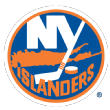
April 14: New York Islanders
Projected cap space: $28.90 million
2025 draft picks: 1st, 2nd, 3rd, 4th, 5th, 6th, 7th
What went right? The Islanders showed determination by putting themselves into a contending position this season, particularly during an 11-3-0 run through January ahead of the 4 Nations Face-Off break. They benefited from some terrific individual performances along the way, most notably from Bo Horvat (with a team-leading 54 points) and Anders Lee (pacing New York with 28 goals).
Noah Dobson continued to show why he's one of the league's burgeoning stars on the back end and Alexander Romanov appears increasingly comfortable in his role. GM Lou Lamoriello also deserves credit for the tidy trade of Brock Nelson, which primarily netted New York (among other things) a first-round pick in 2026 NHL draft and promising prospect in Calum Ritchie.
What went wrong? The Islanders failed to truly excel in any category. They're 25th in the scoring (averaging 2.77 goals per game) and gave up the 13th-most goals against (3.14), with a putrid, 31st-ranked power play (13.1%) and equally awful penalty kill (72.0%). Losing Mathew Barzal to injury for all but 30 games this season certainly took its toll in basically every respect. Starting goaltender Ilya Sorokin has been fine (with a .905 save percentage) but hardly the spectacular figure he was in helping New York reach the playoffs in recent seasons.
The Islanders didn't have enough difference-makers, and Lamoriello did not bring anyone on board before the trade deadline. In fact, Lamoriello held onto guys such as Jean-Gabriel Pageau and Kyle Palmieri -- a pending UFA -- and seemingly missed out on a chance to add draft assets for a much-needed overhaul. By the time head coach Patrick Roy was publicly calling out forward Anthony Duclair and subsequently seeing Duclair take a leave of absence from the team, it was clear how tensions were boiling over.
Keys to the offseason: New York must at least consider taking a big swing. But is Lamoriello going to do that? The Islanders should have about $28 million in cap space to use for next season, and they've got a couple of high draft picks. It's time to decide though what direction the franchise is headed. Can Lamoriello steer this group back to contending status? Or is a rebuild on deck?
There are also critical personnel decisions to make. The Islanders have a large collection of pending RFAs, including Dobson, Romanov, Scott Perunovich, and Adam Boqvist. Who New York keeps will have a major impact on their blue line. The Islanders again need to address their scoring depth. Barzal's absence absolutely hurt New York. Shoring up the offense so it can withstand injury will go a long way. But step one is getting honest about where the organization is right now, and whether they keep pushing to compete in the Metro or take a step back and retool.
Realistic expectations for 2025-26: The Islanders sputtered this season after making consecutive playoff appearances -- both with first-round exits. Unless there's some significant changes in the offseason, one-and-done in the postseason is about as good as New York can expect.
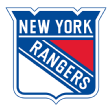
April 14: New York Rangers
Projected cap space: $9.67 million
2025 draft picks: 2nd, 3rd (SEA), 4th (ANA), 4th (COL), 5th (MIN), 6th, 6th (SEA), 7th
What went right? New York didn't need any added distractions this season, so the fact GM Chris Drury was able to offload underperforming former captain Jacob Trouba early was a shrewd move and kept the Rangers from dwelling on that particular problem all season. The Kaapo Kakko trade was a necessary swap as well that was swiftly handled. And bringing on J.T. Miller was, at least, an attempt to give New York a needed boost up front.
Meanwhile, New York saw growth from some of its young players, especially Will Cuylle (with a career-high 20 goals and 43 points this season). Artemi Panarin has done his part to lead the Rangers on offense (37 goals and 87 points) and Adam Fox anchored the blue line with trademark efficiency.
What went wrong? Oh boy. Are the Rangers this season's biggest disappointment? It's hard to argue otherwise. Last season's Presidents' Trophy winners are a shadow of their former (114-point) selves. All the previous characteristics New York displayed as regular-season champions evaporated. The Rangers lacked consistency (they haven't won three games in a row since November), veteran contributions (Mika Zibanejad and Chris Kreider have been particularly lackluster), a functional power play (ranked 27th at 17.6%) and failed time and again to show any sort of resiliency (they have won five games all season when trailing by one in the third period).
The lack of urgency and determination that elevated New York teams of the past has been missing. But why? Was it the rumored locker room issues? Has coach Peter Laviolette's message been falling on deaf ears? Whatever the reason, New York never truly put its game together. To be officially eliminated from the postseason in a dispiriting 7-3 loss to Carolina on Saturday was a fitting salvo in a lost season.
Keys to the offseason: Can Laviolette survive to coach another season? That's question No. 1 -- and a bafflingly one to even be considering given he led the Rangers to their best regular season the season before. But it seems inevitable New York is going to make drastic changes after this clunker of a season.
Next, Drury must assess this Rangers' core and figure out who to build around, and who to move out. The way Kreider and Zibanejad have struggled could lead Drury to find them new homes. And New York's blue line is probably in need of a redo given the Rangers gave up the 14th-most goals against (3.10) and that's with one of the league's better goalie tandems in Igor Shesterkin and Jonathan Quick. It's not as if New York has to tear it all down. Drury must identify where the biggest leaks this season came from and do what's necessary to patch the holes.
Realistic expectations for 2025-26: New York can easily be a playoff team again next season. But it will require some form of change. To stand pat would send the wrong message about how poorly the Rangers performed this season. A chip on the shoulder will help New York get back to its potential.

April 14: Philadelphia Flyers
Projected cap space: $25.64 million
2025 draft picks: 1st, 1st (COL), 1st (EDM), 2nd, 2nd (ANA), 2nd (CGY), 2nd (CBJ), 3rd, 5th, 5th (CAR), 6th
What went right? Philadelphia had its moments. The arrival of Matvei Michkov signaled the start of a new era for the Flyers in which Michkov -- a 20-year-old dynamo leading all NHL rookies with 24 goals -- has seemingly unlimited potential to drive their offense into the future. And Philadelphia has other young players -- such as last year's No. 13 pick Jett Luchanko -- to be excited about too after his brief NHL audition.
The Flyers' old guard wasn't all bad, either. Travis Konecny had another strong season with a career high in points ahead of his long-term extension starting next season. Ultimately, Philadelphia can't stay in a rebuild mode forever and it was positive to see GM Danny Briere actually make some moves -- such as trading Joel Farabee and Scott Laughton and firing coach John Tortorella -- to help kick-start Philadelphia into 2025-26.
What went wrong? The Flyers were too big a mess in too many key categories. Philadelphia's collection of goaltenders produced a woeful .888 save percentage at even strength, the worst recorded by a team since 2009-10. Samuel Ersson wasn't the reliable No. 1 the Flyers needed, and it showed too often in how games slipped away. Philadelphia's putrid power play was another problem -- 30th in the league (14.9%) -- and a 24th-ranked offense hasn't been much help. By the time Philadelphia had lost 11 of 12 through mid-March, it was no surprise Tortorella was gone. Something is clearly still missing in Philadelphia.
Keys to the offseason: First, Philadelphia needs a head coach. Briere will decide quickly whether that's via removing the interim tag from Brad Shaw or a new addition. There's much work to be done with the next permanent bench boss in place.
Philadelphia absolutely must capitalize in the draft. They hold three first-round picks and four second-round choices. There's a chance if the Flyers draft high enough that one of those first-rounders steps into their lineup at some point next season. Briere must be smart in how he cashes in on that capital. Then it's all about development. Philadelphia doesn't project to be overly active in free agency given the amount of talent it already has in the NHL and waiting in the wings. What the Flyers need are for those players to take steps forward so when training camp comes around there is serious competition for spots, and it sets up Philadelphia for a competitive season.
Realistic expectations for 2025-26: This is the fifth consecutive season Philadelphia has missed the postseason. The Flyers must at least challenge well into April for a spot next season. Briere has been patient with this group continuing to grow and it's about time those investments paid dividends.

April 14: Pittsburgh Penguins
Projected cap space: $24.58 million
2025 draft picks: 1st, 1st (NYR), 2nd (WSH), 3rd, 3rd (MIN), 3rd (OTT), 4th, 5th (CHI), 5th (NYR), 6th, 7th
What went right? Pittsburgh can always count on Sidney Crosby to breathe some sort of life into their season, and the captain delivered again with a 30-goal campaign that suggests the 37-year-old isn't slowing down. And that's a great thing -- because the Penguins' recent youth movement might signal brighter days ahead. GM Kyle Dubas brought up Rutger McGroarty -- acquired via trade earlier this season -- and Ville Koivunen to get Pittsburgh's next wave ready with some NHL experience. Smart decision. The Penguins needed to end the season on a high note, and showcasing what the franchise has coming seemed invigorating for old and new skaters alike.
What went wrong? It was death by a thousand cuts in Pittsburgh. The Penguins don't have the depth to compete with other Eastern Conference powerhouses -- outside of their top line (with Crosby, Rickard Rakell and Bryan Rust mostly), there wasn't enough consistent scoring. Even Evgeni Malkin struggled with only 15 goals this season.
That dearth of scoring issue was amplified by the Penguins' problems keeping pucks out of their net. Tristan Jarry flamed out as the team's expected No. 1 goaltender, being demoted to the AHL along with his 3.31 goals-against average and .884 save percentage through mid-January. To be fair, Jarry (and the Penguins other netminders) got no help from a leaky blue line that surrounded the second-most goals per game (3.58) this season. It would have challenged Pittsburgh to overcome its issues in only one phase of the game, let alone all three.
Keys to the offseason: Pittsburgh doesn't appear close to firing coach Mike Sullivan, so that allows the Penguins to hit the ground running again in figuring out how to capitalize on its youth movement. McGroarty and Koivunen will be counted on to compete for slots in training camp.
Then it's on Dubas to address the Penguins' lack of scoring with some strategic veteran additions. The market should play out in Pittsburgh's favor there -- and offering the incentive of potentially skating alongside Crosby never hurts in a negotiation. And the Penguins' defense? It can't stand as is. If Dubas is still trying to avoid a full-scale rebuild, then it's crucial to use this offseason to find roster balance between the Penguins' present and future additions. Some degree of outside help is required to make that happen.
Realistic expectations for 2025-26: It's not reasonable to say Pittsburgh makes it back to the playoffs -- unless there are some key changes. If the Penguins rightly address their leaks, then there's talent enough to put Pittsburgh back as a playoff contender. But that's a mighty large question as this season comes to a close.
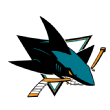
April 14: San Jose Sharks
Projected cap space: $42.19 million
2025 draft picks: 1st, 1st (DAL), 2nd, 2nd (OTT), 3rd (COL), 4th (STL), 4th (WPG), 5th (COL), 7th (NJ)
What went right? The blueprint for the future. Star rookie center Macklin Celebrini leads the team in points, and fellow star rookie forward Will Smith is fifth. They used the trade deadline to add a pair of first-round picks; they'll have two first-rounders in 2025 and again in 2026, continuing a trend since 2023. Even though they're going to finish with the NHL's worst record for a consecutive season, the Sharks have already shown some sense of improvement given they went from a minus-150 goal difference to minus-98 entering the final week of the regular season.
What went wrong? Well, there was quite a bit. But that's to be expected whenever a team is in the midst of a rebuild.
The Sharks were in the bottom 10 in goals per game, the power play, scoring chances per 60 minutes, shots per 60 and high-danger chances per 60, which explains their offensive struggles. On defense, they gave up the most goals per game, had the worst penalty kill, and were in the bottom 10 in most scoring chances allowed per 60, most shots allowed per 60 and most high-danger chances allowed per 60.
Keys to the offseason: Do they get the No. 1 pick for a consecutive year? Or will it be No. 2 or No. 3? Whatever happens, this will be the third straight draft cycle and the fourth time in the past five in which the Sharks have a lottery pick. Picking that high along with having a second first-round pick will certainly advance their rebuild.
Then there's the fact they'll have more than $42 million in cap space, which can be used to address their roster -- with the caveat that the Sharks might not be major players in free agency for at least a few more years.
Realistic expectations for 2025-26: Continuing to watch the progress made by Yaroslav Askarov, William Eklund, Celebrini and Smith, among others, is going to be the priority. The Sharks will seek to make more improvements while further developing those franchise cornerstones in Ryan Warsofsky's second year behind the bench. But there's also a possibility the Sharks could either sign players in free agency or move on from players on their current roster ahead of the deadline to add even more draft capital for their future plans.

April 14: Seattle Kraken
Projected cap space: $21.75 million
2025 draft picks: 1st, 2nd, 2nd (TOR), 4th, 4th (DAL), 5th, 7th
What went right? All three of the trades they made this season. Moving on from Will Borgen led to them getting a one-time No. 2 overall pick in Kaapo Kakko, plus draft capital. At the trade deadline, they acquired a pair of first-round picks in 2026 and 2027 in exchange for Oliver Bjorkstrand and Yanni Gourde. Parting ways with Brandon Tanev netted them a second-round pick in the 2027 draft. Kakko has 10 goals and 29 points in 46 games for the Kraken as part of a season in which he set a career high with 43 points.
What went wrong? Between their underlying defensive metrics and the fact they sent Philipp Grubauer to the AHL? It wasn't the most consistent season for the Kraken when it came to goal prevention. Having a new coaching staff included the departure of assistant coach Jay Leach, who played a crucial role in the Kraken's defensive identity. This season, they were in the bottom 10 in shots allowed per 60 minutes, scoring chances allowed per 60 and high-danger chances allowed per 60. The underperformance from Grubauer didn't help, and in fact, Joey Daccord (who began as the backup) was one of their more consistent performers.
Keys to the offseason: Dan Bylsma's coaching staff helped pull the Kraken from the bottom five in goals per game in 2023-24 to being around league average this season. Could they find a defensive version of that solution heading into 2025-26, with the idea that it might provide the Kraken with the consistency that has eluded them as a franchise? That is one of the most significant questions facing the Kraken now that they have missed the playoffs in three of their first four seasons.
Realistic expectations for 2025-26: The Kraken must be in contention for a wild-card spot (at minimum), or there will be some big questions to answer for the front office at this time next year.

April 14: Utah Hockey Club
Projected cap space: $21.53 million
2025 draft picks: 1st, 2nd, 3rd, 4th, 5th, 6th
What went right? Quite a bit. The trade during draft weekend for franchise defenseman Mikhail Sergachev set the stage for a season in which the franchise made real strides. Before moving to Salt Lake City, the Arizona Coyotes had one 80-point season since 2014-15. The Utah Hockey Club had 84 points with four games left. The team was still fighting for a playoff berth entering the final two weeks of the regular season, which was another step forward for the core -- and proves that bigger things could be on the horizon.
What went wrong? Overtime and shootouts. Entering the final two weeks of the regular season, only the Flames and Canucks had more overtime losses than Utah, two teams that were also chasing a Western Conference wild-card spot. But losing those 12 games in overtime or a shootout demonstrates how Utah was close in many games. If it can get on the winning end of those extra-time coin flips next season, the results will be different too.
Keys to the offseason: Remember how the Coyotes were hamstrung by a need to be miserly with cap space? The Utah Hockey Club doesn't have that issue. That much was made clear last offseason when GM Bill Armstrong invested $22 million for each of the next two seasons in bolstering the defensive unit. Utah will have more than $21 million in space this summer, which is enough to improve a roster that could seriously challenge for a playoff spot. A top priority? Improving an offense that was 21st in goals per game, with a power play that was 15th.
Realistic expectations for 2025-26: Making the playoffs. It's really that simple. Utah has a core that has gone through its growing pains. It's a group that has shown it can make progress from one year to the next. Nearly the entire roster is either under contract or team control for next season, and the front office has enough cap space to add the sort of players who could help clinch a playoff berth in the club's second season in Salt Lake.

April 14: Vancouver Canucks
Projected cap space: $15.08 million
2025 draft picks: 1st, 2nd, 3rd (SJ), 4th (OTT), 5th, 6th, 7th
What went right? Despite all the inconsistencies, the numerous injuries to key players, and the J.T. Miller-Elias Pettersson friction, the Canucks were still in the hunt for a wild-card berth entering the final two weeks of the regular season. Yes, there were those who had strong individual seasons, including reigning Norris Trophy winner Quinn Hughes and Pius Suter, who had his first 20-goal effort and more than 40 points. But those performances could only get the Canucks so far, in a season in which they will miss the playoffs after winning their division and coming within a game of the conference finals a year earlier.
What went wrong? All those inconsistencies, those numerous injuries and the Miller-Pettersson friction.
One detail that speaks to those inconsistencies is that the Canucks were among the top five in the NHL in terms of fewest shots allowed per 60 minutes and scoring chances allowed per 60 -- and yet were 19th in goals allowed per game. It's what made the need for scoring depth even more crucial. This became more evident in the wake of trading Miller to the Rangers and trying to find ways to replace a forward with three consecutive seasons of more than 80 points.
Keys to the offseason: What happens to head coach Rick Tocchet? Does he stay on his one-year option as a bridge to a longer-term contract? Or could he be swayed to leave, which would then leave the Canucks searching for a fourth coach since 2020?
After the coaching situation is resolved, what happens to Brock Boeser? A six-time 20-goal scorer, he's a pending UFA who could command a significant payday should he reach the open market. Do the Canucks ink him to a long-term deal?
Realistic expectations for 2025-26: Add the Canucks to the list of teams whose situation could become clearer once free agency ends. They have most of their team either under contract or team control for next season. But two of their three leading goal scorers -- Boeser and Suter -- are pending UFAs, whereas there is also uncertainty surrounding Tocchet.
Getting those questions answered along with addressing their other concerns could provide a stronger grasp for how the Canucks navigate next season. But a return to the postseason is certainly within grasp.


